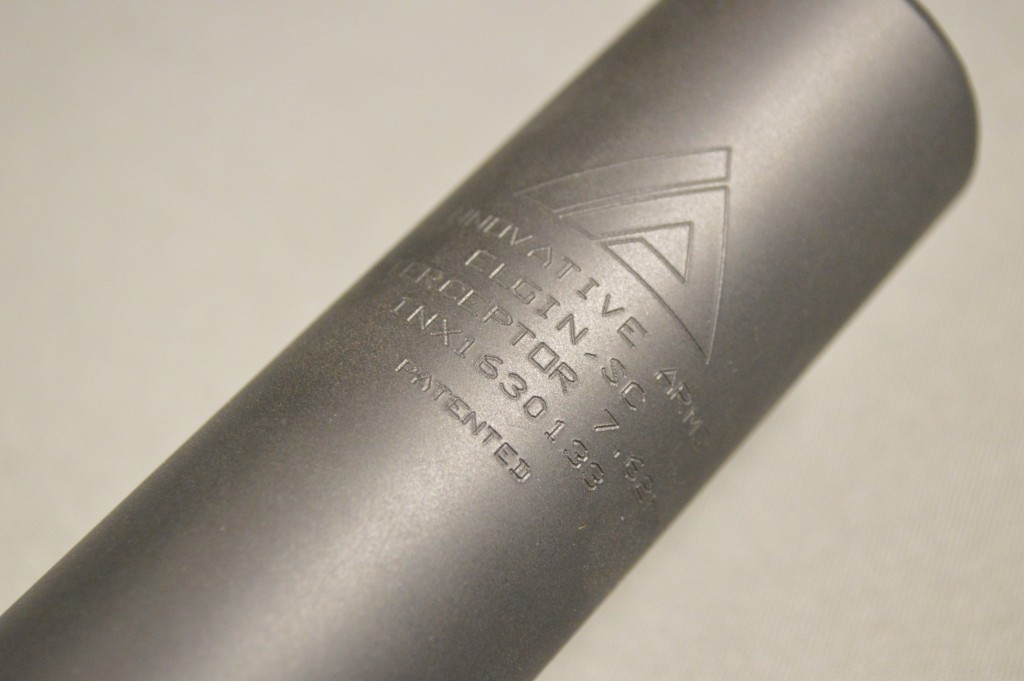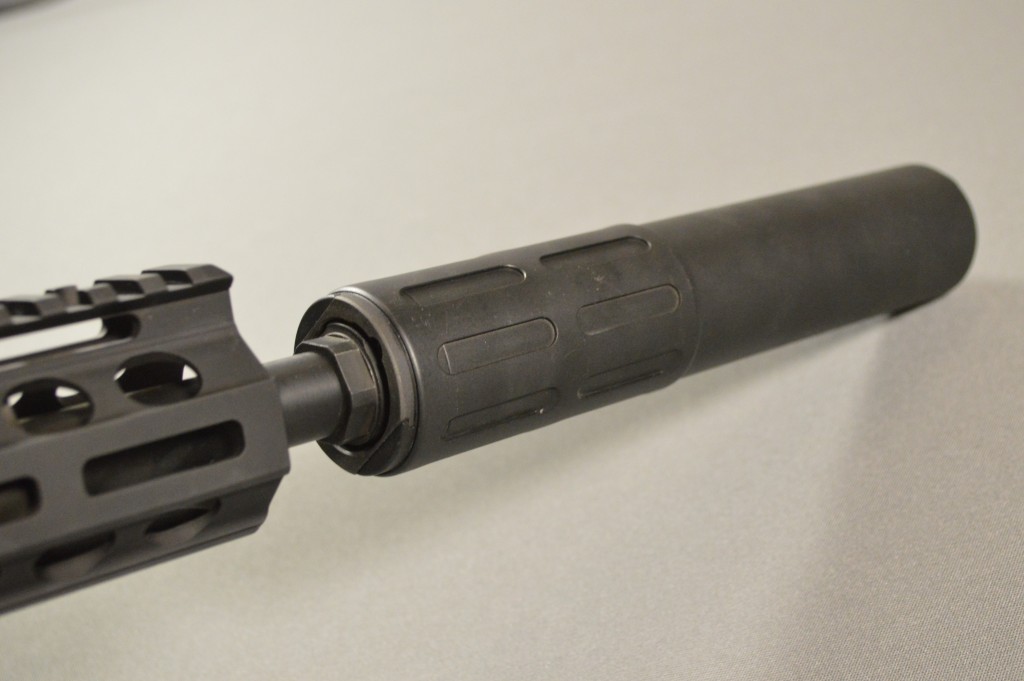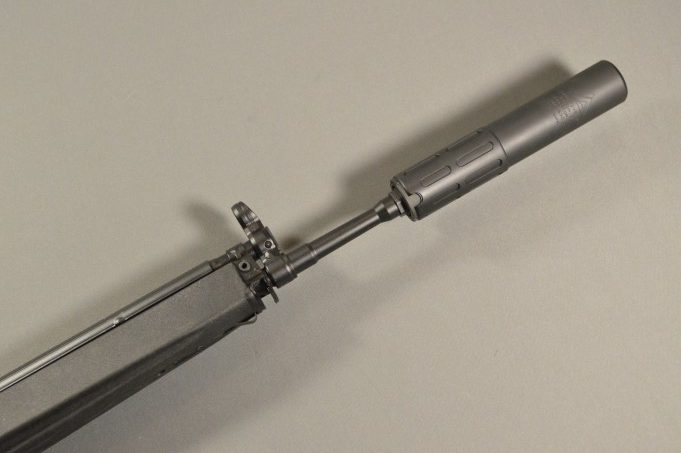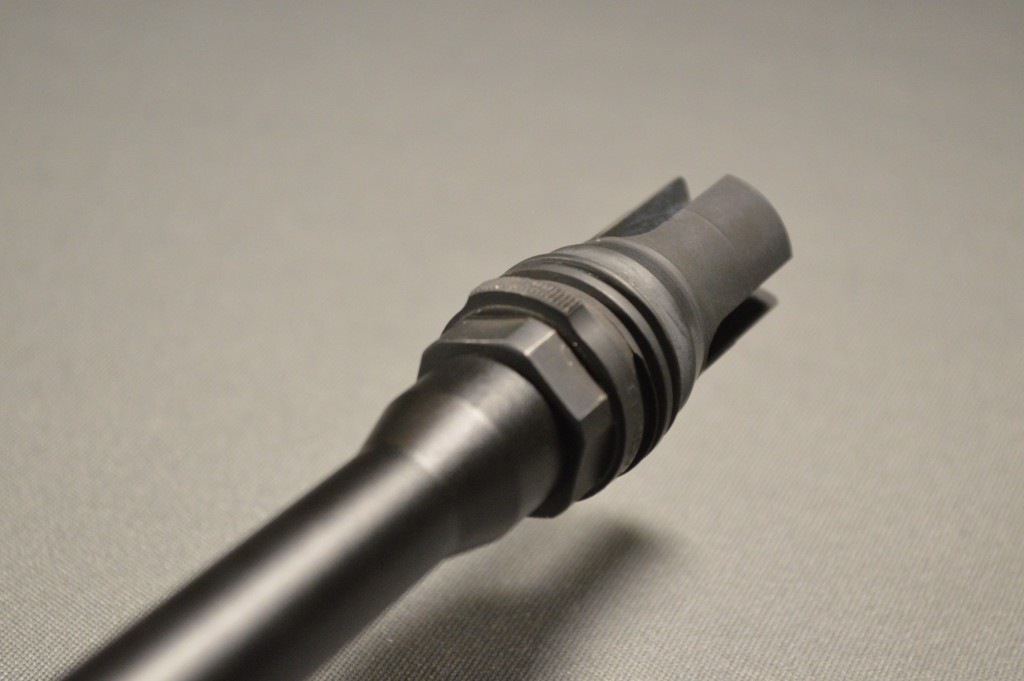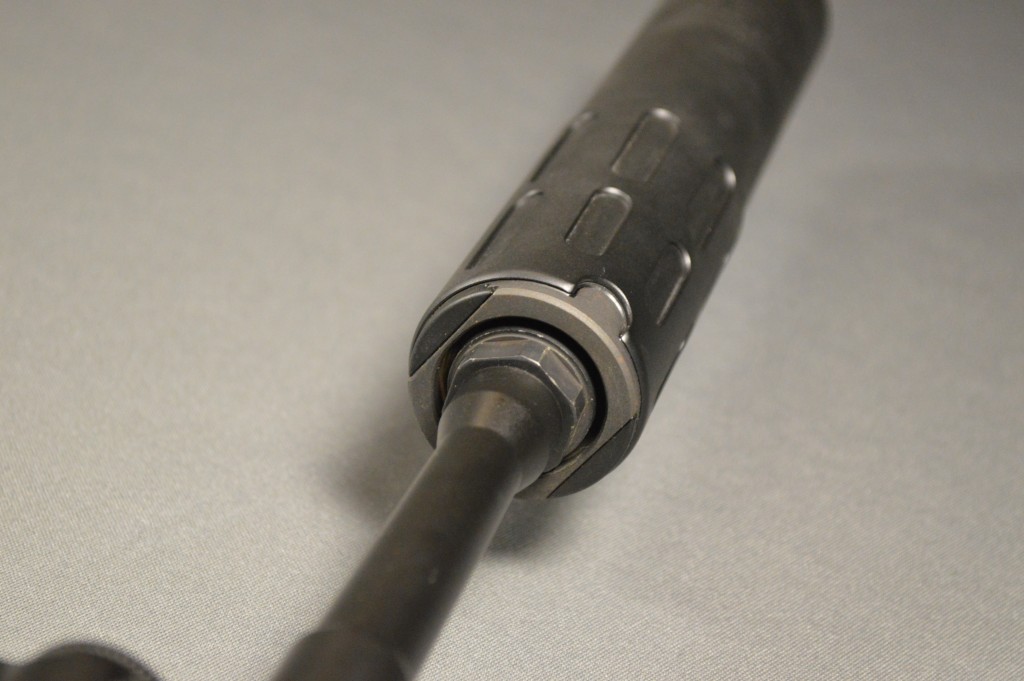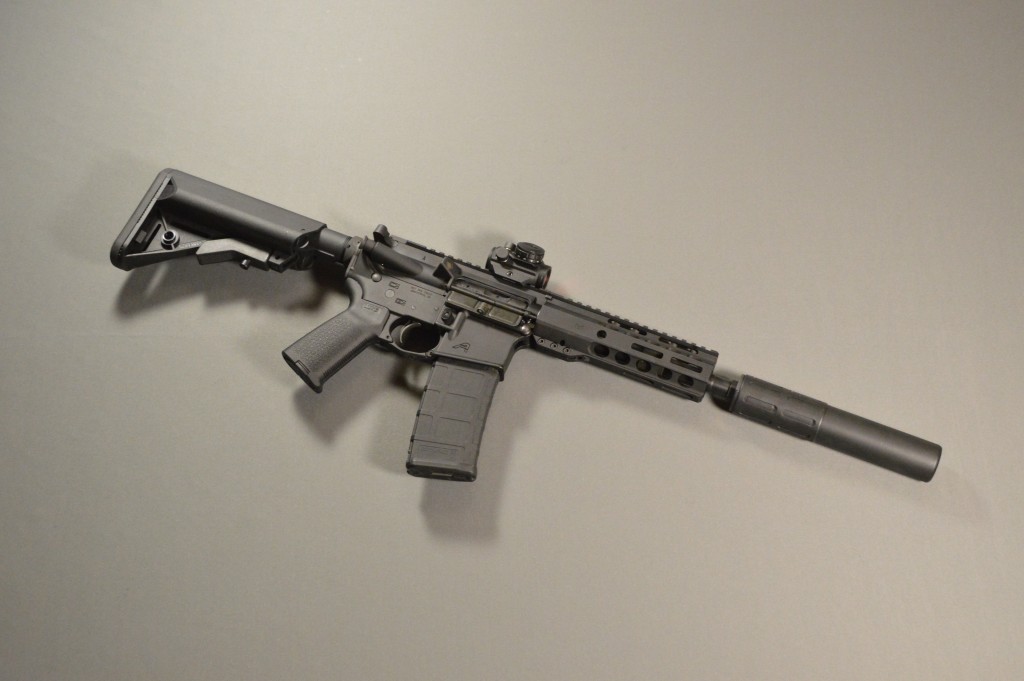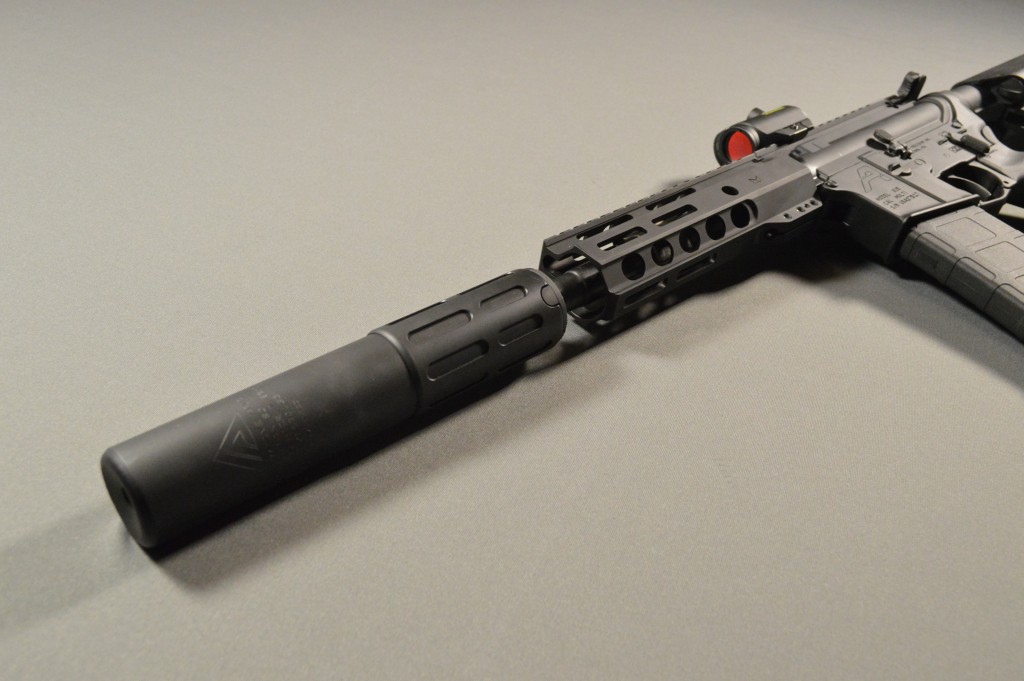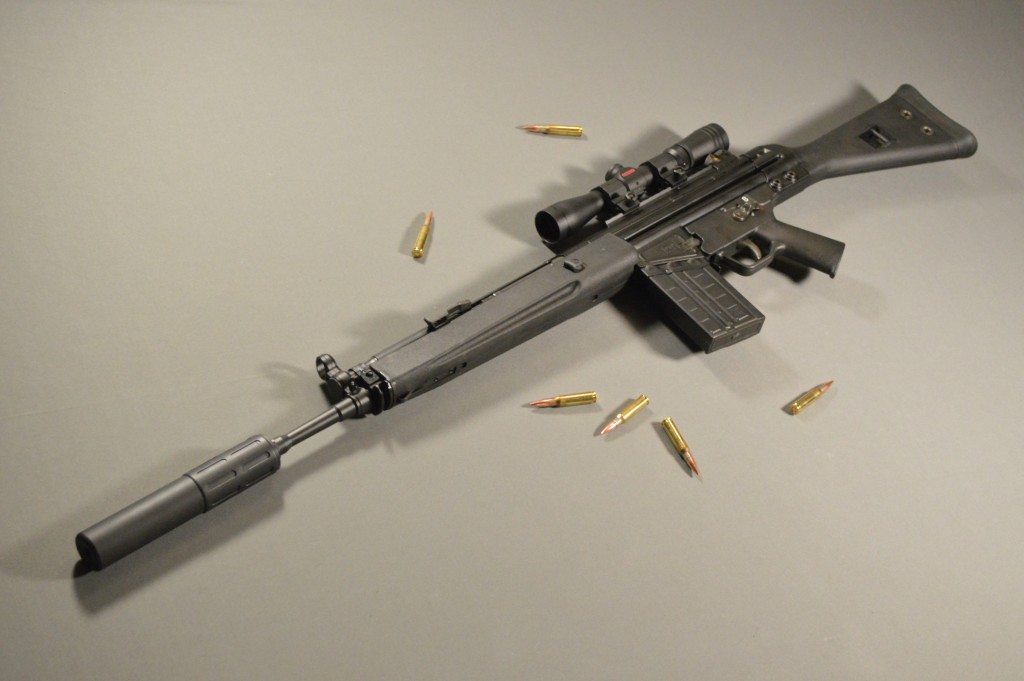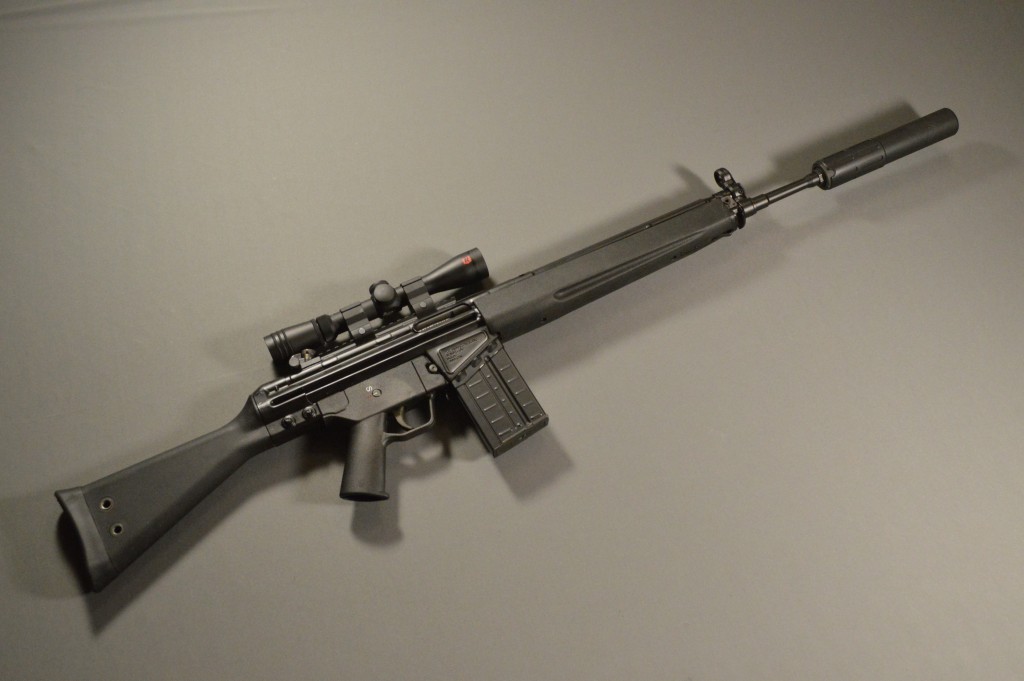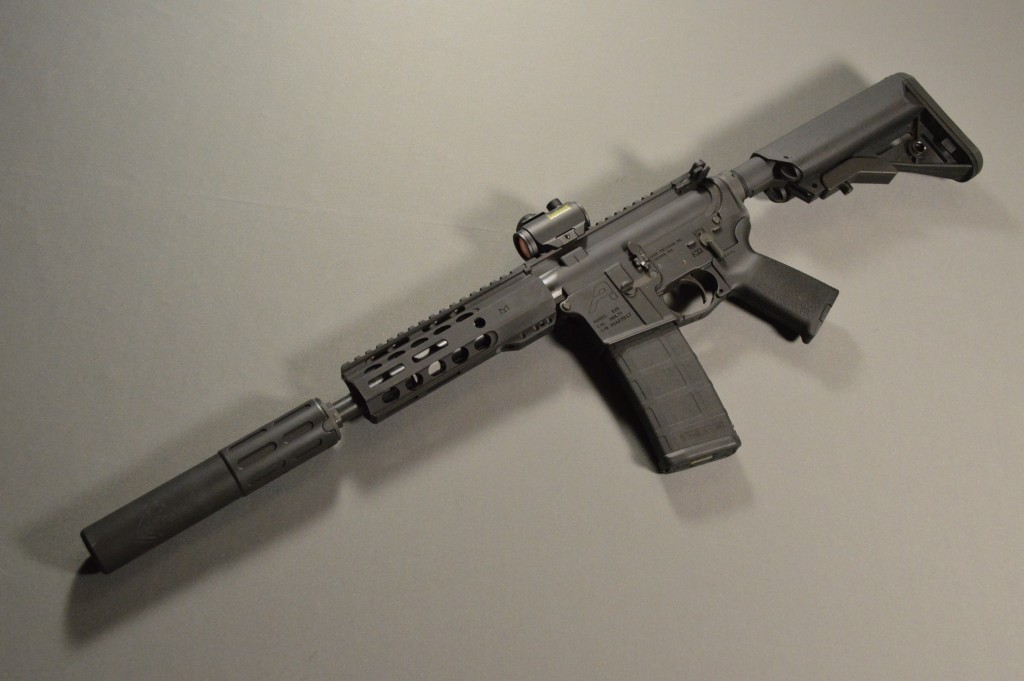Silencer Shop Authority: Innovative Arms Interceptor 7.62 Review
Thanks to my friends at Silencer Shop, I’ve spent some serious time over the last month taking a close look at some of the newest silencers from Innovative Arms. My first review in this series dropped almost a month ago when I examined Innovative’s Interceptor 5.56. I found that suppressor to be remarkably rugged, but very heavy. Next, I looked at the Slingshot Micro – a superbly compact rimfire silencer that performed incredibly well on rifles, despite being a hair loud on pistols. Today, we’re taking yet another peek at an Innovative Arms suppressor with the Interceptor 7.62. Does it fare better than the 5.56 model? Keep reading to find out.
Size & Weight
The Interceptor 7.62 is roughly the same size as most other .30 caliber suppressors. It’s just over 7.75” long, and the tube comes in at 1.5” in diameter. At the rear of the tube, this particular version of the Interceptor features a cage-like shroud that Innovative Arms calls the Exoskeleton. Exoskeleton-equipped Interceptors have an outer diameter of around 1.6” at their widest point.
Like the Interceptor 5.56, the 7.62 model is very, very heavy. Without a mount, my postal scale read 23.8 ounces with the Interceptor in tow. Adding a 2.5-ounce flash hider brings the total system weight to a hair over 26 ounces. Versions without the Exoskeleton are around two ounces lighter. In my opinion, that’s still too heavy for a modern can. Five years ago, no one would have minded a .30 caliber suppressor that weighed around 25 ounces. The market has changed, though. Today, most people expect sub-20 ounce weights, even for .300 Win Mag enabled silencers.
Materials & Design
Part of the reason the Interceptor 7.62 is so hefty is that it is entirely constructed of 17-4 stainless steel. The rear half of the tube is encased in the aforementioned Exoskeleton Shroud, which adds some aesthetic flair and helps with cooling. It also allows the can to be used with 300 Win Mag. The Exoskeleton on the Interceptor 5.56 was mostly useless, but this time around, it actually does add functionality. Good on Innovative. The whole thing is then finished with ceramic paint, likely Cerakote or similar.
Inside the tube sit five of the most robust baffles that I’ve ever seen. Seriously, folks, the Interceptor is a rugged piece of kit. You can safely run this thing with fully automatic .308 on a 10” barrel (7.5” with .300 BLK). That’s impressive. Unlike most rifle suppressors, the Interceptor’s baffles are monocore style. They feature flat blast surfaces that feature 90-degree steps machined diametrically in each blast face. The steps cause each baffle’s bore hole to form an oblong opening. This ovular shape allows some gas particles to advance into the next chamber ahead of the others and changes the gas’s direction of travel in the process. It’s a simple design that more closely resembles rimfire and pistol suppressors than competing rifle cans.
Many companies seek different approaches with rifle silencers because monocores don’t efficiently redirect high-pressure gasses. While low-pressure gas from rimfire and pistol rounds hits the flat baffle surfaces and redirects, more energetic particles blow right through. That’s why most manufacturers choose conical baffles in rifle suppressors as they more effectively scoop gas away from the bore line and trap it inside the suppressor. While the Interceptor’s monocore is incredibly robust, I think Innovative Arms would have been better served with conical baffles, but I’ll touch more on performance in the Range Report.
The key changes start just past the flash hider’s prongs. Unlike AAC’s 51T mounts, but somewhat like their 90T offerings, the Interceptor QA mount features a taper that creates a gas seal in front of the mount’s locking parts and also helps with alignment. Behind the taper sit coarse threads, which allow the silencer to be threaded quickly onto the mount. Once the suppressor is almost fully snugged to the flash hider, a spring-loaded locking gate on the silencer interacts with a small section of ratcheting teeth on the mount to lock the silencer in place. The flash hider’s teeth and the suppressor’s threads are timed to the coarse threads on the mount so that only a small section of teeth need to be machined into the muzzle device. The design reduces wear on the suppressor’s locking gate because it limits the number of mount teeth the gate must pass over before locking the can. Finally, it also minimizes the probability that teeth on the mount will be damaged in use. Detaching the suppressor simply requires a shooter to press the button on the Interceptor’s locking gate for a brief moment before unscrewing the silencer. The system is very fast for both attachment and removal.
When I was at the NRA Annual Meetings last May, I asked the guys from Innovative Arms about muzzle brakes. To my surprise, they indicated that they will not release brakes of any sort. Their rationale was that muzzle brakes affect the way gas flows through the silencer. Since they want these particles to move forward through the can to fill each expansion chamber, they feel that muzzle brakes work against their design. I can’t say that I agree with the theory, but I also doubt brakes are really necessary for the Interceptor. Most people like to use compensators and muzzle brakes as sacrificial baffles on short rifles, but I think that the Interceptor’s baffle design naturally implies a certain amount of longevity.
This arrangement’s overall sound performance was a mixed bag. Even though the Interceptor doesn’t perform quite as well as top-end options like SIG’s SRD762Ti, it made a respectable showing and was well within the “hearing safe” realm. That said, it certainly could – and should – be quieter. Plenty of suppressors manage 125 dB or thereabouts at the muzzle with .300 BLK, but according to Silencer Shop’s testing, the Interceptor 7.62 hits right around 131 dB. My experience using the can with Federal’s American Eagle “Suppressor” .300 BLK supports these numbers. While .300 BLK such as the SIG and Rugged’s Surge 7.62 were so quiet that I could only laugh, the Interceptor wasn’t able to evoke such a response. Innovative’s suppressor isn’t loud enough to make your ears ring, but it’s significantly less pleasant than the category’s leaders.
Flipping the Interceptor over to my .308 PTR-91 A3R was a better experience. Because .308 has more powder than something like a 5.56mm round and .30 caliber silencers have larger bore apertures than their 5.56mm cousins, suppressing the PTR is invariably louder than your average AR-15. Even top-performing suppressors only barely beat 140 dB with .308 rifles when metered according to standard, military specifications (1 meter to the side of the muzzle). With these facts in mind, the Interceptor 7.62 fared quite well. I certainly did keep my ear muffs on while using the can, but my read was that it sounded very much several of the other .30 caliber suppressors I’ve tried. For reference, Silencer Shop has found the Interceptor 7.62 to average around 139 to 140 dB on a .308 rifle.
Anytime you deal with a suppressor that’s as weighty as the Interceptor, you’re going to have to contend with some point of impact (POI) shift. Thanks to its slim profile barrel, my PTR-91 is especially prone to noticeable POI movement when used with a suppressor. With the Interceptor 7.62, the rifle consistently shot three minutes of arc (MOA) right of where it would without the silencer. While thread concentricity and silencer design can play a role in POI shift, suppressor weight and barrel profile tend to be more powerful determinants. To that end, the Interceptor 7.62 falls in line with other, similarly-sized silencers.
Conclusion
My take on the Interceptor 7.62 is more or less the same as my opinion of its smaller brother. With this suppressor, Innovative Arms has delivered an impressively robust can with an excellent (perhaps the best) mounting system. Unfortunately, the Interceptor is also very heavy, and its performance doesn’t seem to make up for that fact. With average .308 numbers and merely acceptable .300 BLK volume reduction, there’s room for the Interceptor to improve.
An information security professional by day and gun blogger by night, Nathan started his firearms journey at 16 years old as a collector of C&R rifles. These days, you’re likely to find him shooting something a bit more modern – and usually equipped with a suppressor – but his passion for firearms with military heritage has never waned. Over the last five years, Nathan has written about a variety of firearms topics, including Second Amendment politics and gun and gear reviews. When he isn’t shooting or writing, Nathan nerds out over computers, 3D printing, and Star Wars.

